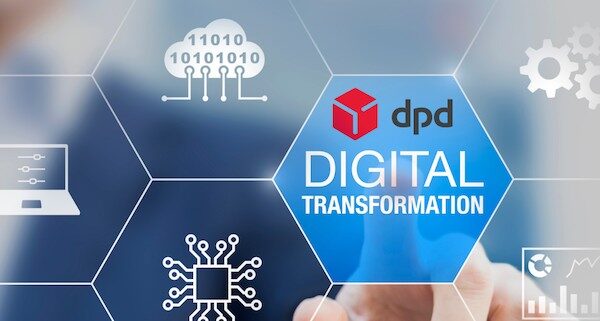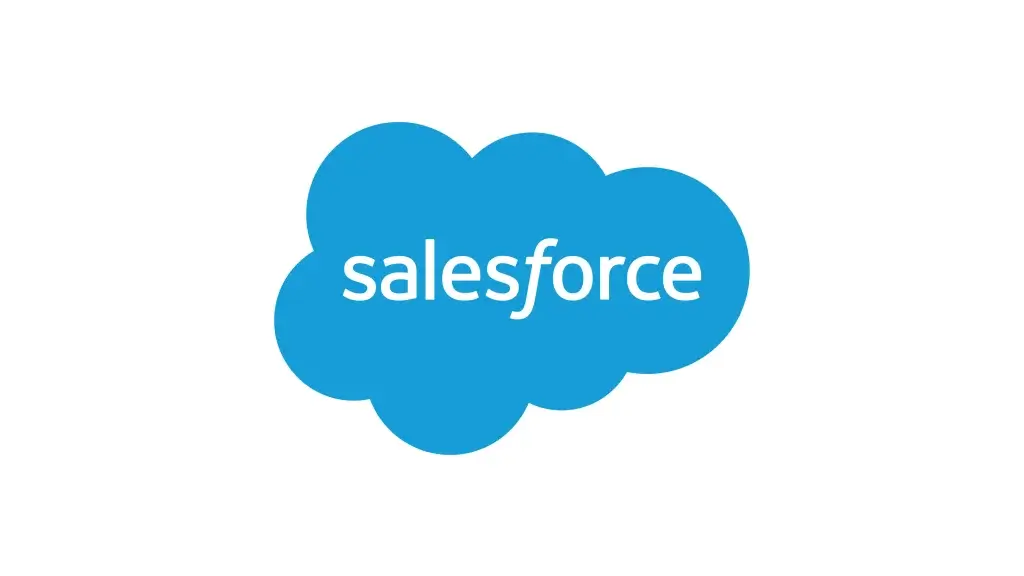At the Digital Transformation Summit 2022, Jiří Mach, the CEO of Enehano, had a great opportunity to interview the CIO of DPD. Even after more than 1,5 years of cooperation (not only) on CRM implementation, Jiří learnt a lot of new information and impressions, which he will share with you in the following interview.
DPD is a well-known company to most people. It is the largest ground parcel carrier in Europe, employing 100,000 couriers and up to 130,000 in high season. DPD Czech Republic employs 1,700 couriers and up to 2,300 couriers in high season.
Looking at the Salesforce implementation project at DPD, the first question that comes to mind is this: What were DPD’s needs at the very beginning? What motivated you to make such a fundamental change?
We decided to make a change two years ago. The goal was to “have a CRM” and replace the existing one, which was more a customer database to which you could add notes. There were several main reasons, mainly we wanted to:
1. Establish end-to-end customer relations management
2. Manage the business pipeline and forecasting without the need for Excel sheets
3. Make our reporting and resource management more efficient (again, without the need for Excel files)
4. Centralize customer care to a single place. Having all data on a single platform so that salespeople don’t have to use multiple tools and they know what’s going on with their clients with a single click.
5. Prepare data for campaigns – from my perspective as a CIO, this is actually the most important point, as we are aware that we are operating with customer information, i.e., the most sensitive data. In addition, up to that point, our data was quite fragmented and of insufficient quality. Considering the fact that data sets the direction and drives the company, this was a crucial issue for us overall.
DPD is an innovative company. How do you look at Salesforce and what do you expect from it in the future?
From my perspective, it is an easy-to-use tool that allows us to have the RIGHT customer data in the RIGHT and ONE place. At the same time, the data are fast to use, which is the key to success today.
From a business perspective, we worked closely with the Head of Sales to build the business case. The new CRM helps us with a number of things, including:
- Improved customer data quality (speed, flexibility, quality)
- The possibility to manage the sales pipeline. Here I also mean that it would help us in crisis management. With Excel sheets, a quick response would not have been possible. And let’s not forget about improved customer service.
- Improved customer satisfaction
- Reduced operational costs – in two clicks, CRM allows us to manage and reduce operational costs and to better deal with the turnover of salespeople. Handing over the agenda is now easier.
- Cross-selling and up-selling possibilities
- Retaining existing customers and acquiring new ones – which is connected to another point:
- Increased efficiency of marketing campaigns – which are based on the right data with the possibility to use a special Marketing Cloud tool.
- Increased customer loyalty – when a salesperson knows what the customer doesn’t like from the beginning, they can adjust their communication.
Let me go back to the beginning, where we started, namely with Blueprint (note: the initial analysis). Can you share your experience – what were the first steps of cooperation and advise others what to look out for?
The crucial step was to choose the right supplier. Our internal discussions took a year and were set on a competitive platform. Eventually, however, we were told by the DPD Group that we had to implement Salesforce. We were a bit stumped because we didn’t know any vendor on the Czech market that had experience with such an extensive implementation as we had planned at DPD.
We took a long time to select a potential supplier because we wanted to make sure that there is the right chemistry between the client and supplier teams.
Once we had a supplier selected, analysis followed and then Blueprint. We are currently in phase 4 and it is the lessons learnt from the blueprint that we want to focus on now.
What did the implementation schedule look like? Could you talk about the main milestones?
For DPD, the main requirement was to have the implementation ready before the main season, which for us is the Christmas period. This means at the end of September 2020, so that we can handle the pre-Christmas rush with a new and functional CRM.
We launched the kick-off exactly at the time of the pandemic outbreak, at the beginning of March 2020, and we started the pilot operation 7 months later. We went live the first half of November and I must admit that we appreciated the fact that Enehano (the project supplier) pushed us not to shorten the pilot process due to time constraints and allow enough time for testing. Thanks to a conscientious pilot we even managed the planned live operation in early November, after a whopping 7 months.

Do you remember what were the main criteria for choosing a CRM platform? And what do you use it for?
The most important part was accepting the fact that we wanted a CRM that we would adapt to and not expect the CRM to fully adapt to us. We knew that if we use a cloud-based tool, there will be a risk of constantly evolving and adapting to new requirements. We wanted to avoid endless updates. In the end, we admitted that we knew we weren’t perfect and that we wanted to use what someone else had already figured out. That we would take advantage of the features that Salesforce already had.
.png)
What do we value most? Again, this can be summarised in a few points:
- All customer data are in one place. Previously, not everything was stored in CRM and this reflected on imperfect reporting.
- The Lightning design. It may seem like a small detail, but we liked the look of the new CRM and we wanted it to be friendly for our internal users (especially salespeople).
- Process automation. For us, the change was not motivated by COVID but rather by low unemployment rate, as it was impossible to find good candidates. That’s why we were forced to automate everything we could to make our colleagues’ jobs easier.
- Our salespeople are perfectly ready to communicate with customers, as they have full data at hand.
Automated and digitized processes have allowed us to simplify the operation of entire departments.
For example, we don’t have to send emails with Excel files to be signed and sent back. There is no need to scan documents, minimising the likelihood of lost documents. In Salesforce, it’s all about clicking off a task, which is also kept in a single tab at the client’s side. Everyone can see it and the salesperson who sets up the appointment is perfectly informed. Digitization and automation are very important for us and we will focus on them in the future.
To be honest, I was surprised myself how data–driven DPD is and how deeply you think about automating processes and minimizing routine steps. During the implementation of the new CRM, DPD acquired Geis. How did you perceive this and what was the impact?
The kick-off meeting with Enehano took place at a time when we knew about the acquisition but could not talk about it. We had to redo the original analysis because we had to increase the number of users by 60 salespeople, three segments turned to five, and even process automation had to be rethought. We didn’t do without re-segmenting customers, we had to pair DPD with Geis customers. As a result of the acquisition, we gained 10,000 active Geis clients. The new CRM was very important for the integration of the two companies and we can’t imagine the acquisition without it. At the same time, we all felt the pressure of a deadline which we couldn’t extend. Enehano’s team faced a big challenge to deal with the new data from Geis. In retrospect, we actually did incredibly well.
The overall project brief has thus increased by 60%, with the same time constraints. What does it look like today? How many people are using CRM?
What is happening in our CRM? Currently 190 salespeople and 250 active users (including finance, operations and IT) are using the new CRM. From November 2020 to May 2021, our new CRM generated 43,000 opportunities, covering 38,000 manually created opportunities, 13,000 “to do” tasks and 8,000 calls.
Dear readers, the second part of the interview, in which you will learn the main lessons learnt from the DPD project or the next steps that Vladimír and his team are planning to take, will be published soon.
Let’s take a look at the biggest lessons learnt from DPD. Is there anything you would do differently today?
As I mentioned before, the most important thing is the selection and subsequent cooperation with the supplier. We have learnt the following lessons:
1. Human resources – DPD struggled with in-house staffing which meant that for 9 months, our people worked more than 14 hours per day and they were under a lot of pressure.
2. Good assignment vs. agile approach – I would focus on this from the beginning of the project. We could not use the preparatory stage in our case (as a result of the acquisition) and we had many ideas in the implementation stage. That didn’t make the whole process easier. There should be some fixed frameworks at the beginning so that in-house contractors don’t change the conditions.
3. Licenses vs. solution – given the fact that we were in a rush and integrated other processes, such as finance, into the new CRM, we were looking more at the requirements than the fact that we would need more licenses than planned. The first business case envisaged 150 licenses (for sales) and we thought we had a large margin. Suddenly we were up to 250 licenses. It would have been good to know that up front.
4. Do not work on another major project at the same time, as cooperation with seven other departments was necessary (apart from Sales also HR, Finance, Operations, IT, Complaints, etc.). We had to integrate and manage different systems with each department and this is also something which should be part of the planning ahead.
What are your plans in terms of CRM and SF?
As far as automation and digitalisation are concerned, this is a continuous development at DPD. It started with implementation, but it will continue with “fine-tuning“, as will the whole process in the sales department. They have been using the new CRM for a shorter period of time, only three months, because before that they had to reconfigure the whole process, which changed as a result of the aforementioned acquisition in which the department expanded.
We are also planning to integrate marketing into the Salesforce platform, which we currently have centralized within the DPD Group, and also customer service, where the “click-to-call” or call recording features works well for us, but we want more and we know that Salesforce can do it. We are also planning to digitize the complaints system in Service Cloud.
Thank you very much for sharing your experience, we will be honoured to be your partner for the digitisation of other processes at DPD.
If you are interested in more information or wish to arrange a meeting, get in touch with us at jan.kartusek@enehano.com.




